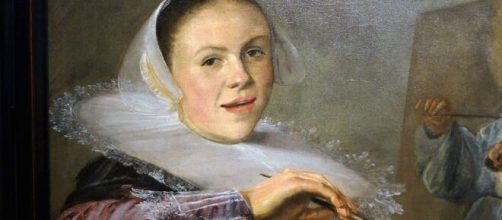Do you have to be an emotional mess to be an artist? That's the question Susan Cain raises when she asks if melancholy serves creativity in her new book "Bittersweet."
Based on multiple studies, her answer comes down to yes and no. Cain's 2012 bestseller "Quiet: The Power of Introverts in a World That Can't Stop Talking" was more declarative.
It's not her fault that the question she poses has contradictory answers. There are artists throughout history that makes the case for both answers.
But she goes on to cite a lot of research suggesting the answer to her question is a resounding yes.
One study, for example, shows that people in the arts are 10 times more given to suffer mood disorders.
Another study looked at the lives of 48 creative people, from Michelangelo to Madonna, for the 2012 book "Tortured Artists." The research noted "pain and suffering" as a common denominator among artists.
Hold that thought for a moment
To Cain's credit, she points out that "whatever the theory, we shouldn't make the mistake of viewing darkness as the sole or even primary catalyst to creativity. After all, plenty of creatives are sanguine types."
If that's the case, why bring the question up in the first place? Even thinking about artists as crazed – (isn't everyone out of whack sometimes?) – is a tiresome cliche.
What's more, you don't have to be an artist to be viewed as whacky. Consider Donald Trump, Vladimir Putin, and Marjorie Taylor Greene to name a few non-artists.
My answer to whether you need to be sad or insane to be an artist would be no. Most painters and sculptors throughout art history led quiet family lives, even despite "pain and suffering."
I'm thinking of Peter Paul Rubens, reportedly devastated when his first wife of 17 years, and mother of their three children, died.
He married her lookalike niece and had five more children. Those cupids you see flying around in some of his paintings are modeled after his progeny, though not all survived infancy.
Also coming to mind is Judith Leyster, a 17th-century artist known for large-scale figure paintings, who was the mother of a whopping 15 children.
Yet, with all that begetting, her pictures are hopeful and heartening, even raucous.
Then there's the sculptor Barbara Hepworth contending that her four children made her a better artist.
Historian Cindy Nemser's 1975 book "Art Talk" quotes Hepworth saying that even the anxious times with her children served her work. The sculpture called Oval Form was directly inspired by one of her children: "I was desperate because my youngest daughter had osteomyelitis. She was ill for four years. I thought the only thing I can do to help this awful situation is to make some beautiful object. Something as clean as I can make it as a kind of present for her."
Cautionary tale
I rush to say that my examples of artists who were not messed up are not meant to suggest that an artist who has it together needs to be a parent or even a spouse. It's only a way to say that pain and suffering don't beget madness.


